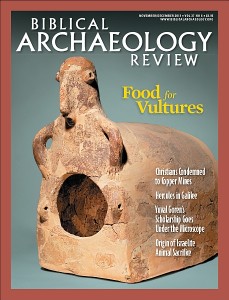
A leading Biblical minimalist scholar, Philip Davies of the University of Sheffield in England, has famously suggested that King David had about as much claim to be a historical figure as King Arthur.
Then in 1993, a basalt stela inscribed in Aramaic was discovered at Tel Dan that referred to Beyt David (the House of David). Until then the name David had not been found in the archaeological record. Here, however, was a mention of the dynasty of David a mere 150 years or so after the famous monarch lived. Moreover, it was a reference by an enemy, probably Hazael. All this did little to change Davies’s mind, however.a
In a new book, The Old Testament Between Theology and History (Westminster John Knox, 2008), another leading minimalist scholar, Niels Peter Lemche (who dedicates his book jointly to Davies and fellow minimalist scholar Thomas Thompson, identifying them as “comrades in arms”) considers the effect of the Beyt David inscription on the question of whether there really was a King David. After noting that “some scholars…consider [the inscription] to be a forgery” [without citing any such scholars], Lemche considers whether this inscription proves that there was a King David:
Already a library member? Log in here.
Institution user? Log in with your IP address.

